Gold mining in Venezuela, an underworld of chaos and violence
In 1870 the gold rush began in the village of El Callao, 850 km southeast of Caracas, Venezuela. Today the bands of traffickers are fighting for the business with blood, fire and torture
With the flashlight on his forehead, Ender moves nimbly in the darkness of the tunnel. Some stones come off and break the silence. 30 meters underground, it is in the underworld of chaos and violence of illegal gold mining in Venezuela.
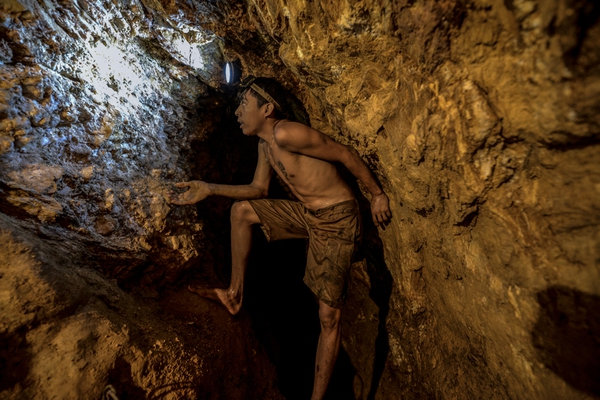
It makes embarrassment and a slight smell of gases emanates from the galleries. "It does not scare me," he says from the hole where the drilling already found water. Ender Moreno is a miner since he was 10 years old and at 18, thin, covered in mud, shirtless and barefoot, he looks so "until he dies".
But life in the mines of eastern Venezuela, in the state of Bolívar, is not only hard, but dangerous. Miners shot, stabbed or quartered frequently appear in the middle of an anarchic war between gangs of gangsters who, with rifles R-15, FAL and AK-47, dispute the control of the deposits.
The shootings in the mining towns are common. Two weeks ago they killed three young people in the Ender neighborhood. A day earlier, he had been dancing with them at the El Callao carnival, a village located 850 km southeast of Caracas, where in 1870 the gold rush began in Venezuela.
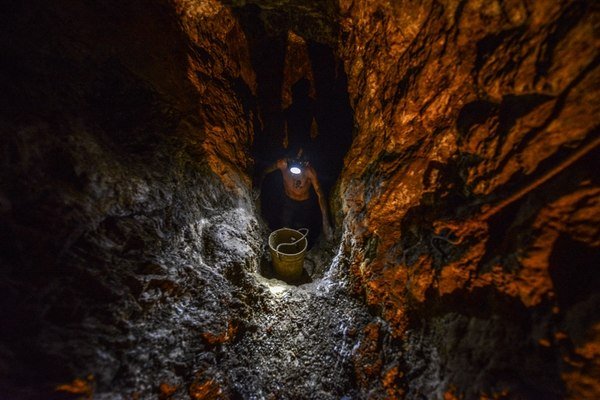
With the flashlight on his forehead, Ender moves nimbly in the darkness of the tunnel. Some stones come off and break the silence. 30 meters underground, it is in the underworld of chaos and violence of illegal gold mining in Venezuela.
It makes embarrassment and a slight smell of gases emanates from the galleries. "It does not scare me," he says from the hole where the drilling already found water. Ender Moreno is a miner since he was 10 years old and at 18, thin, covered in mud, shirtless and barefoot, he looks so "until he dies".
But life in the mines of eastern Venezuela, in the state of Bolívar, is not only hard, but dangerous. Miners shot, stabbed or quartered frequently appear in the middle of an anarchic war between gangs of gangsters who, with rifles R-15, FAL and AK-47, dispute the control of the deposits.
The shootings in the mining towns are common. Two weeks ago they killed three young people in the Ender neighborhood. A day earlier, he had been dancing with them at the El Callao carnival, a village located 850 km southeast of Caracas, where in 1870 the gold rush began in Venezuela.
Although life in the mines of eastern Venezuela is harsh and dangerous, tens of thousands of people across the country are daily driven to them in overcrowded trucks. Although life in the mines of eastern Venezuela is harsh and dangerous, tens of thousands of people across the country are daily driven to them in overcrowded trucks.
They are driven by the rise in gold prices and the serious economic crisis affecting the country, which worsened recently due to the fall in oil prices. They are driven by the rise in gold prices and the serious economic crisis affecting the country, which worsened recently due to the fall in oil prices.
"They were miners, but they had turned with the thugs (mafias)," he said after leaving the black cylinder, making himself heard in the roar of the saw with which two men cut wood to secure the loose soil of the pit.
There, at the La Culebra mine, named for its sinuous veins, Ender works among a group of miners in the La Ramona sector -in the outskirts of El Callao-, whose leader they killed a year ago for resisting the mafias.
Everyone in their territory
A few kilometers away, Argenis Tarazona, 47, works in an open pit mine in Nacupay, one of the most violent in the area and with the greatest environmental impact.
Some undermine the polluted river, others wash the material in the racks with mercury and some rest in hammocks in the black plastic shacks where they live.
It's no man's land. Everyone is afraid to speak of those gangs that impose the order of fear and to whom the miners, the stone mills and the warehouses (small shops), must regularly pay for the "vaccine", as they call extortion.
"One gets used. The one who eats the light (violates the rules), the one who steals, they kill him or they beat him up. Here is a group, there is no other group. Everyone has their territory, "Argenis describes.
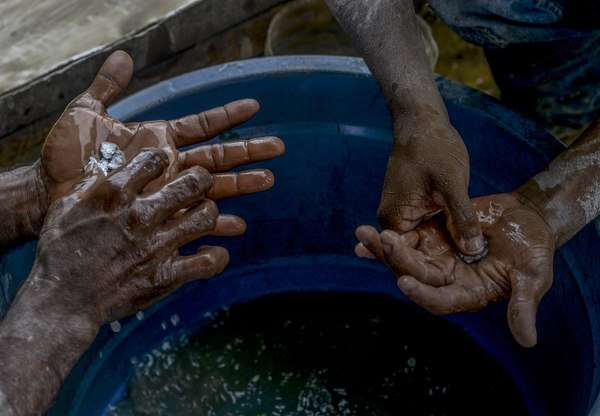
The miners affirm that "the mines are entered, but it is not known if they leave alive". The massacre of 28 workers a year ago in Tumeremo, neighbor of El Callao, is fresh in the memory of the settlers.
"The guards enter from time to time, but they (the criminals) are calm. It is as if it were a parallel government, "says another miner under anonymity, about the corruption of the military and police.
Venezuela legally produced 14.7 tons of gold in 2006 and in 2015 less than one ton (out of a world total of 3,000).
According to Luis Rojas, president of the Chamber of Mining, from 85% to 90% of production "is illegal, mainly under the control of mafias." The government is promoting a plan to reactivate exploitation.
Gold fever
Armed with picks, shovels and chisels, carrying their rafts as hat, men and women daily overflow the trucks to the mines. Many others, even with family, sleep in battered camps.
There are about 50,000, according to Rojas, who come from all of Venezuela, pushed by the rise in gold prices in a context of deep economic crisis caused by the collapse of oil prices.
It does not matter if you are a worker or a professional. Argenis left three years ago his job as an industrial mechanic and his five children in Guaracaro, Bolívar. "You risk your life, but my profession did not give me to eat and study," he said.
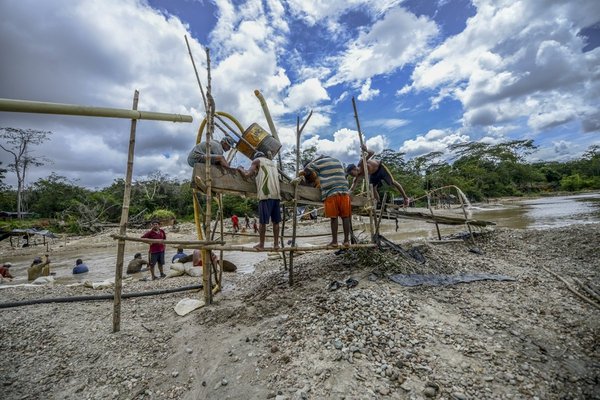
Under a rustic wooden shed that can be reached through mud streets, Jorge Sánchez crushes and washes his material in a mill in La Ramona. Sacks of stone and a week's work with his brother will be reduced to small portions of the coveted mineral.
The expectation lights his twenty-year-old face. The flames of a torch make the golden tone of the metal appear. Proud, then shows in his dark hand the nugget of 10.35 grams.
For each gram they will give you 90,000 bolivares (33 dollars) in the gold-buying houses that abound in these dusty street towns.
Challenging death
For the miners, everything is worth it.
Little do they matter the sufferings of the malaria that attacks without mercy in the mines, whose wells are giant nurseries of the mosquito transmitter of this disease that left 232,000 new cases in the country in 2016, according to the Venezuelan Society of Public Health.
"I do not have another, as a caletero (stevedore) I could not support three children, I arrived four months ago, despite the risks, now I send them 150,000 monthly (55 dollars)," says Gilberto Urrieta, 32, in line of emaciated miners who are going to be examined at the anti-malarial center of Tumeremo.
Although Venezuela had already eradicated the disease half a century ago, 18 of the 24 states today have the epidemic, spread by the floating mining population.
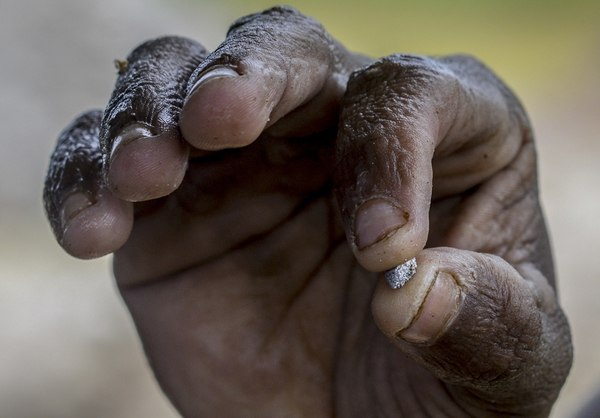
For Jorge, mining is a challenge to death: "We are killed by a landslide, by malaria or by thugs, I have seen several people die." The mine is not for everyone.
Ender is convinced that it is for him. "I left school for the mine, my mother says that this is not life, but I can not leave her because with that I help her, I do not know my dad," she confesses.
His dream is to have a mill. "I'm very young, I want to enjoy life; But the time comes for everyone. You die and you know where you're going, "he says as he sinks back into the loneliness of the tunnel.